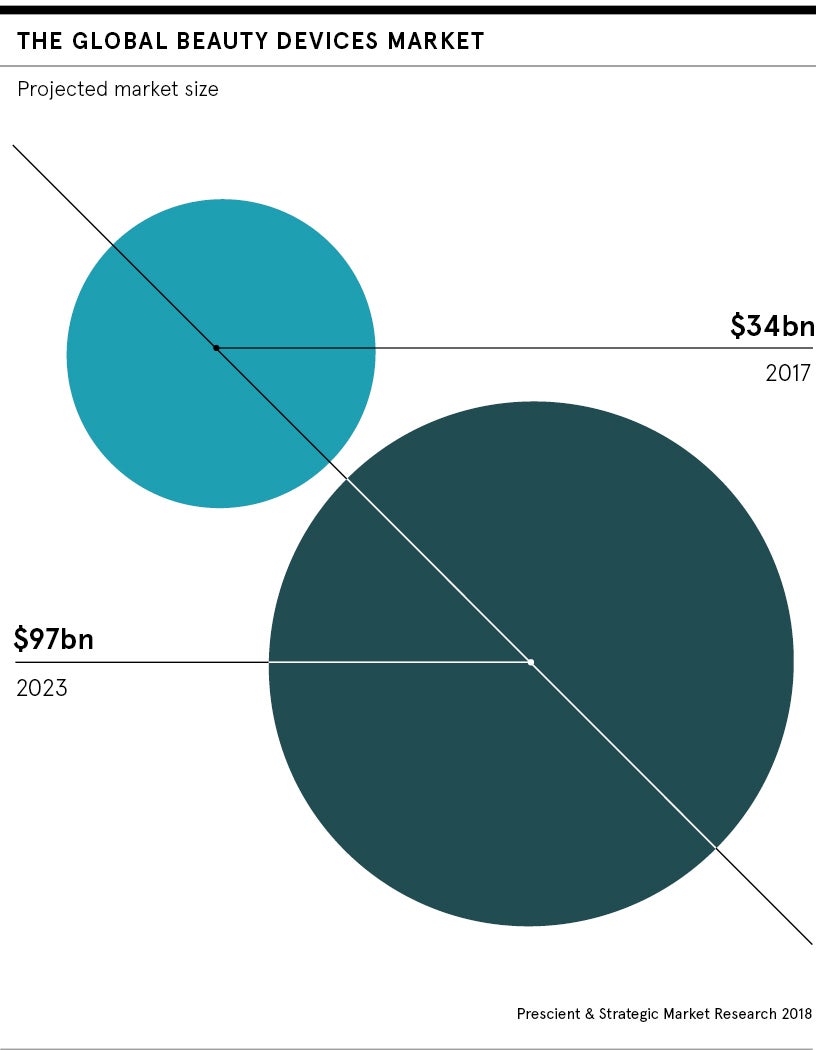Back in 2015, L’Oréal jolted attendees at Dreamforce awake. Delegates at the annual Salesforce conference had endured days of pitches for digitalised sales pipelines and customer retention management systems. They hadn’t banked on someone showing up and talking about tech in the beauty industry. They hadn’t expected a “connected eyeliner”.
Dreamforce 2015 was something of a marker for the multinational beauty company, which was one of the first to take the concept of the internet of things (IoT) and apply it to something as aesthetic as a mascara wand.
Until then, IoT had largely been spoken about in the context of businesses such as Google, Cisco and IBM. Now, here was a L’Oréal executive suddenly talking about tracking the behaviour of customers through their eyeliner or lipstick.
But behind the scenes, L’Oréal had been going through a business transformation. The year before it had launched its Make-up Genius app, which enabled customers to “try on” make-up shades through augmented reality (AR) before purchasing. It went on to acquire the company behind the tech, ModiFace, in 2018. L’Oréal then tasked head of its technology incubator Guive Balooch to start building a global team of engineers, user experience specialists and industrial designers.
Skin sensors to serums
Connected innovations began to roll out across L’Oréal’s portfolio. Kérastase created a smart hairbrush, Vichy launched its SkinConsult AI and La Roche-Posay developed UV Sense, a wearable sensor that tracks exposure to damaging sunlight.
L’Oréal was by no means the only brand to welcome tech in the beauty industry. Neutrogena developed its SkinScanner, a magnifying device that clips on to an iPhone and analyses the likes of pore size and wrinkle deepness. At the premium end of the beauty spectrum, Shiseido revealed its Optune system, an app-connected machine that processes skin, sleep and environmental data, and dispenses a customised serum based on the user’s reading each day.
It is possible, even imperative, for a brand to explore how to bring the benefits of connected technologies to customers
Arrival of connected tech in the beauty industry was belated but inevitable, according to Andy Hood, head of emerging technologies at digital agency AKQA.
“The sector is prime for IoT,” he says. “There is almost infinite variety in people’s skin conditions and responses, physical appearance and personal taste. This makes for an industry where learning about someone and applying what is learnt to what is communicated to them is clearly hugely important and beneficial.
“Now, in an era when technologies are cheap, data is easy to gather and there are a great many ways in which to turn these things into customer value, it is possible, even imperative, for a brand to explore how to bring the benefits of connected technologies to customers.”
Hot at CES, not at Sephora
And yet, when was the last time you saw a connected beauty device in Superdrug? Why hasn’t Boots cleared space for an IoT aisle? For all that the beauty world hails the arrival of tech-driven products as a revolution, the consumer demand for them has been muted at best.
This is most clearly displayed in the market failure of a raft of tech in the beauty industry. Samsung, for instance, unveiled its S-Skin device to great fanfare during the Consumer Electronics Show (CES) in 2017; three years later, it isn’t available for purchase. And that Kérastase smart brush? No longer on the market.

“Every year at CES you see all this amazing technology from the big brands and you rarely end up seeing them in stores,” says Benjamin Lord, chief marketing officer of beauty search engine Mira. “These products are usually extremely expensive, $300 or more. There’s definitely a lot of mistrust from consumers. And the branding itself is just not very good. The super-futuristic positioning beauty brands take, it’s probably not right.”
For Lord, beauty’s investment play in IoT is currently just that, an investment play. Periodically showing up at tech conferences with impressive IoT devices proves to shareholders a brand is anticipating future consumer trends and worthy of headlines across a broad array of media.
“The increase in connected technologies is not driven by customer demand,” Hood agrees. “Beauty-based businesses are using new technologies to differentiate their brand and provide new services that elevate their products and evangelise their expertise, delivering more value and being more attractive to customers.”
Contouring the future
But if delivering tech in the beauty industry is an investor or public-relations game, it’s certainly an expensive one for most to be playing.
L’Oréal’s Balooch has built a team that spans offices in San Francisco, New York, Paris and Shanghai, and developed IoT products for hair colour, lipstick colour and everything in between. Its latest development is Perso, a three-in-one system that manages to combine IoT with AR and artificial intelligence-gathered Instagram trends.
Pioneering such products to a company tied to a fast-moving consumer goods business model, a legacy manufacturing process and a relatively price-elastic product catalogue hasn’t been easy, he concedes.
“We’re going to see many more new business models, more subscription-based offers, more personalisation, maybe more products that are made with exactly the right amounts for what you’re trying to achieve, rather than it being just one specific amount,” he concludes. “We’re at a critical stage where we’re trying to understand that value creation. But in a company like ours, we’re constantly looking to push the boundaries. And it hasn’t been as difficult as I thought.”
Skin sensors to serums
Hot at CES, not at Sephora

